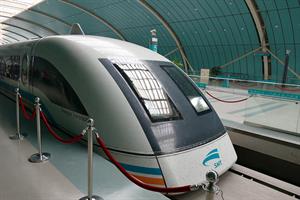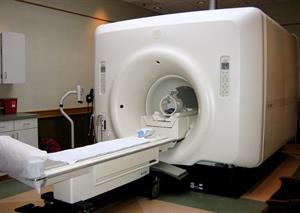PDF chapter test TRY NOW
In the field of engineering applications, electromagnetism has brought in a revolution. Furthermore, this has had a significant impact on various fields, including medicine, industry, and space exploration.
Electromagnets in speakers:
An electromagnet is placed in front of a permanent magnet inside the speaker. The electromagnet is mobile, whereas the permanent magnet is fixed in place. The direction of the electromagnet's magnetic field is rapidly changed as pulses of electricity pass through its coil. This means it is attracted to and repelled by the permanent magnet, which vibrates back and forth. The electromagnet is connected to a flexible cone made of paper or plastic, which amplifies the vibrations and pumps sound waves into the surrounding air toward our ears.
Magnetic levitation trains:
Magnetic levitation (Maglev) is a method of suspending an object using only magnetic fields as support. Two sets of magnets are used in Maglev trains, one to repel and push the train off the track and the other to propel the floating train forward at high speeds without friction. There are no moving parts in this technology. The train travels along a magnetic guideway that uses basic magnet principles to control the train's stability and speed.

Magnetic levitation train
Medical system:
Electromagnetic fields are now used in a variety of advanced medical devices, including cancer hyperthermia treatments, implants, and magnetic resonance imaging (MRI). Electromagnetism-based sophisticated equipment can scan even minute details of the human body.

MRI Scanning machine
Many medical devices, such as Scanners, X-ray machines, and other devices, rely on the principle of Electromagnetism to function.
Reference:
https://commons.wikimedia.org/wiki/File:2014.11.15.141107_Maglev_train_Longyang_Road_Station_Shanghai.jpg
https://www.flickr.com/photos/calliope/223220955
